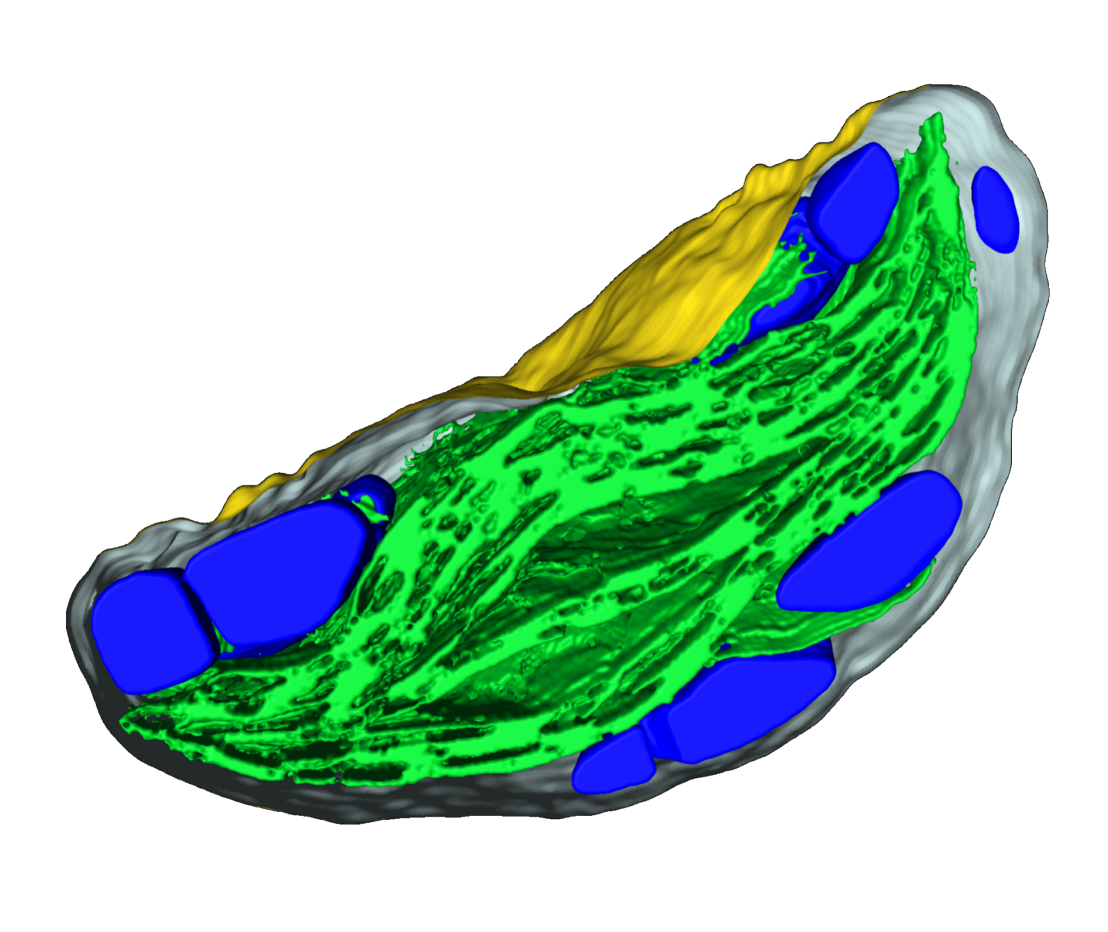Where to start? – Initiation of starch granules
A recent article published in PNAS by the Zeeman Group (IMPB) sheds light on how starch granules initiate within the chloroplast of leaf tissue. The study identifies a key protein, 'MFP1,' as the determinant of the site of starch granule formation.

The primary carbohydrate reserve in plants, starch is a remarkable, semi-crystalline glucan, typically synthesized in two types of tissues: storage tissues (e.g., potato tubers or cereal grains) and green tissues like leaves. The protein factors involved in starch biosynthesis are similar in both tissue types. The focus of this study was on the very first cellular events of starch biosynthesis, which define where and how many starch granules will form.
Previous research from the Zeeman group uncovered several proteins involved in initiation of starch biosynthesis in Arabidopsis leaf chloroplasts. This new paper specifically establishes that one of these proteins, MFP1, plays a crucial role in determining location of starch granule formation. Interestingly, the MFP1 protein is tethered to the thylakoid membranes within chloroplasts, and starch granules are recurrently synthesized between thylakoid membranes. In an intriguing experiment, the researchers relocated MFP1 to another chloroplast membrane - the inner side of the chloroplast envelope. This resulted in the formation of starch granules beside the envelope membrane, highlighting the protein's influential role in directing the activities of all the other starch biosynthetic proteins.
This discovery is significant for comprehending the basic science behind starch granule biosynthesis in plant cells. Moreover, the study holds promise from a plant biotechnological perspective, offering the potential to manipulate starch granule number and size in crops using MFP1 and its interacting partners as a gene targets.
Link to the paper in external pageexternal page"PNAS"call_made.
